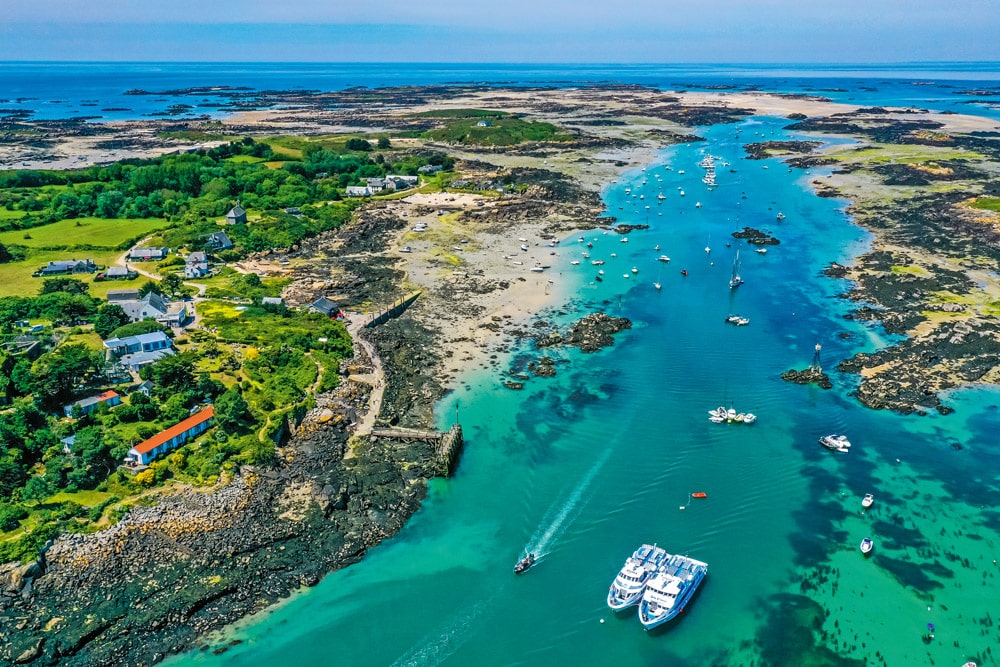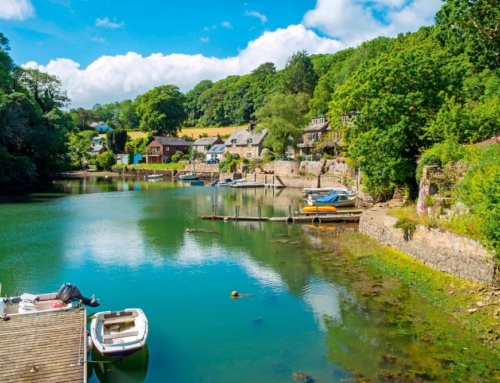PBR’s Channel Island correspondent, Joe Mourant, helps us blow away the last of the winter cobwebs by setting a course for the paradisaic Chausey archipelago. After reading this article, you may well be tempted to plan a summer voyage to this enchanting location yourself …
As we cautiously begin to move beyond the era of the pandemic, adventures previously postponed can be looked at anew. Here in the Channel Islands, there is no better encapsulation of new horizons appearing than our ability to visit the French archipelago of Chausey once again. Sadly, this incomparable cruising ground has remained out of bounds to boaters over the last few years. But of all the delights accessible from a Channel Islands base, perhaps none is more beautiful than this tiny collection of islands lying just beyond the boundary of the UK’s territorial waters.

© Jason Masterman.
Most at fault were the changing political circumstances, which were quickly followed by COVID, both of which conspired to make cruising between the UK and France much more difficult for us all. In some cases, day tripping to Chausey being a prime example, cruising became nigh-on impossible. Based as I am in Jersey, only 15 or so nautical miles from the French coast, I’ve felt the new Brexit rules and the accompanying prohibition of free movement keenly. Journeying across to the Breton and Norman coasts has always been something boaters here have taken for granted, and when it ceased being possible, the more optimistic skippers among us looked ahead to the point where some degree of normality would be restored, whereupon we could once again enjoy adventures to France’s ‘Emerald Coast’.
Out of reach
The stunningly lovely archipelago of Chausey has always enjoyed a status as a sanctuary off the beaten track, and its relative isolation ended up working firmly against prospective UK cruisers to the isles. Regulations that were suddenly more strictly enforced required all visitors to France to enter via an official port of entry (POE). This closed off entirely many smaller ports and anchorages, as their size precluded the requisite customs infrastructure necessary for them to hold POE status. Chausey is a true example of a much-loved anchorage suddenly having been shut out by these rules.
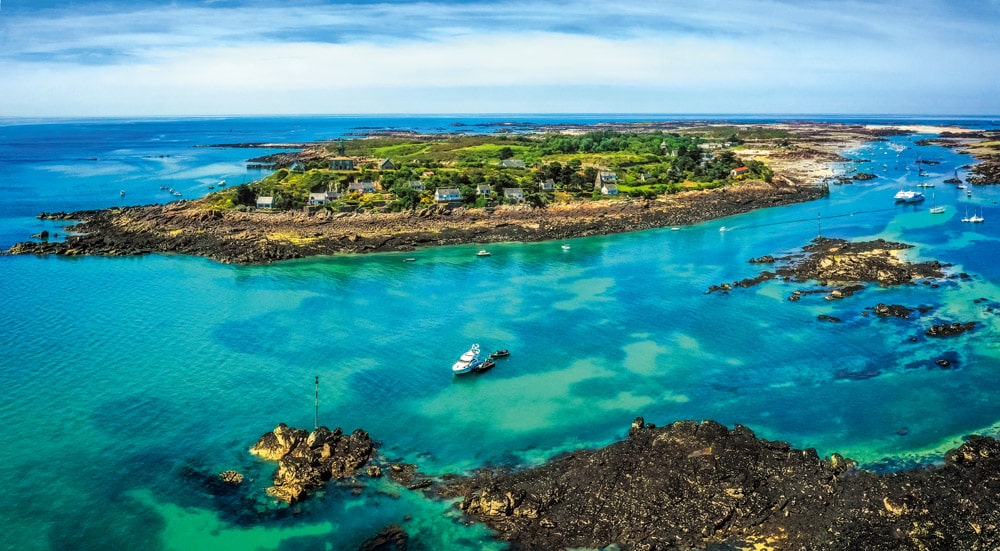
© Jason Masterman.
Stamping passports upon arrival in France and again on departure at one of these POEs was mandated and appointments had to be made in advance with customs departments to do this. Chausey not possessing POE status meant that to land there, the nearest such port to first visit and gain entry stamps was the one located around 10 miles away in Granville. The same trip would then need to be taken after visiting Chausey to gain exit stamps. This could all take the best part of a day, without even factoring in Granville being a tidal port and hence closed for much of each day, and that would just be for travel necessary to gain passport stamps! Practically speaking, then, Chausey was a no-go unless a visit there was folded into a much longer trip to France, with much toing and froing to the mainland being undertaken. Chausey’s stock trade has traditionally been day trippers, so these limitations were all particularly unwelcome. Thank goodness, things have improved.
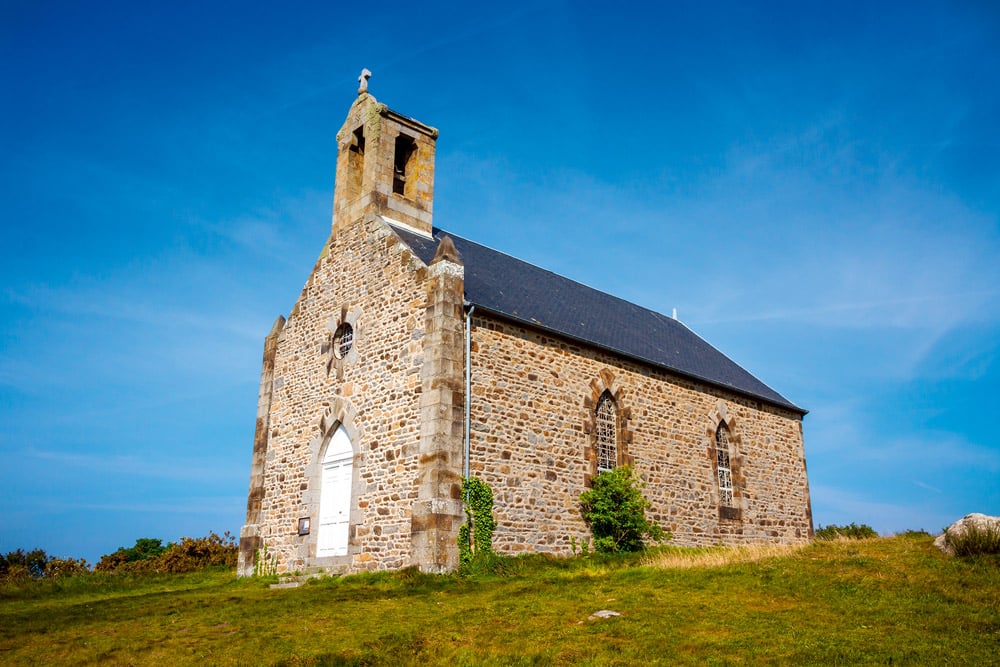
Old traditional church on Chausey island. © Daboost Shutterstock
Secluded sanctuary
The entrancing group of rocks, sandbars and small islands that form the archipelago are, geologically speaking, part of the Channel Islands. They sit just a short cruise south-east of one of the United Kingdom’s most unique marine habitats and its most southerly point, Jersey’s Les Minquiers reef. As is so often the case throughout the Bay of Saint-Malo, the massive tidal range in Chausey adds to the adventure: a 13- to 14-metre rise and fall of the tide on springs revealing 365 islets at low tide and obscuring all but 52 of those come the high. The largest of the islands forming the archipelago, and the main attraction during a visit, will invariably be Grande-Île. Here you’ll find the tiny handful of businesses that exist on the islands, including two fine restaurants and one small but excellent hotel, the latter possessing the only visitor moorings.
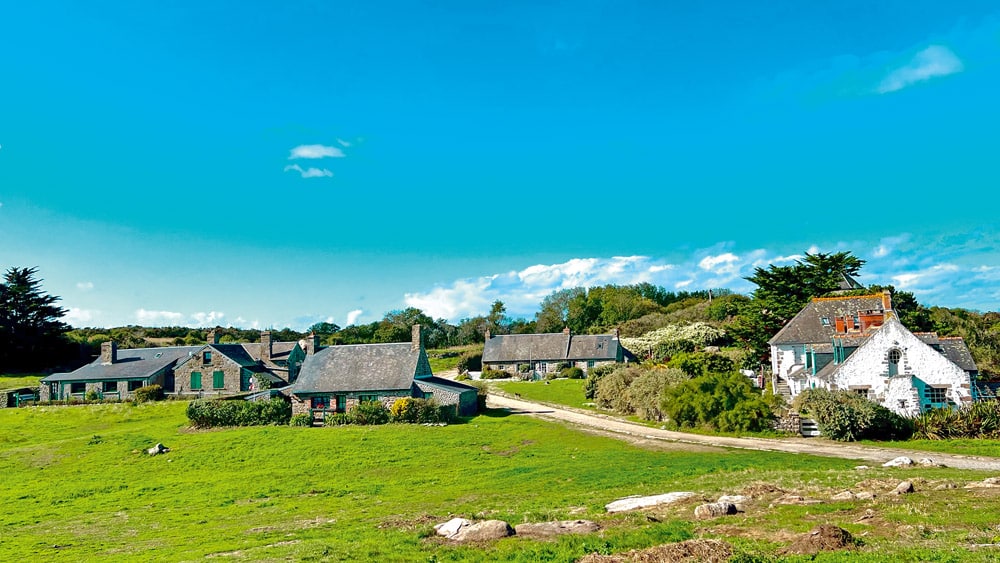
Grande Ile © J. Mourant
The safest option to reach Grande-Île will be the southern approach into Chausey Sound, which uses lateral buoyage to guide visitors from the deep water south of the archipelago into a channel that can be accessed at any height of tide. This leads to the moorings and landing areas. There is also a very picturesque northern approach to the Sound, which can be tackled most safely in the last third of the flood. However, the pilotage for this route is significantly more complex and involves a sequence of visual transits and a close adherence to the leading lines. Only a confident navigator aboard a suitable vessel will feel happy tackling the northern approach, but it is very popular with craft visiting from Jersey, as it saves the motoring otherwise necessary to reach the southern entrance to the Sound.
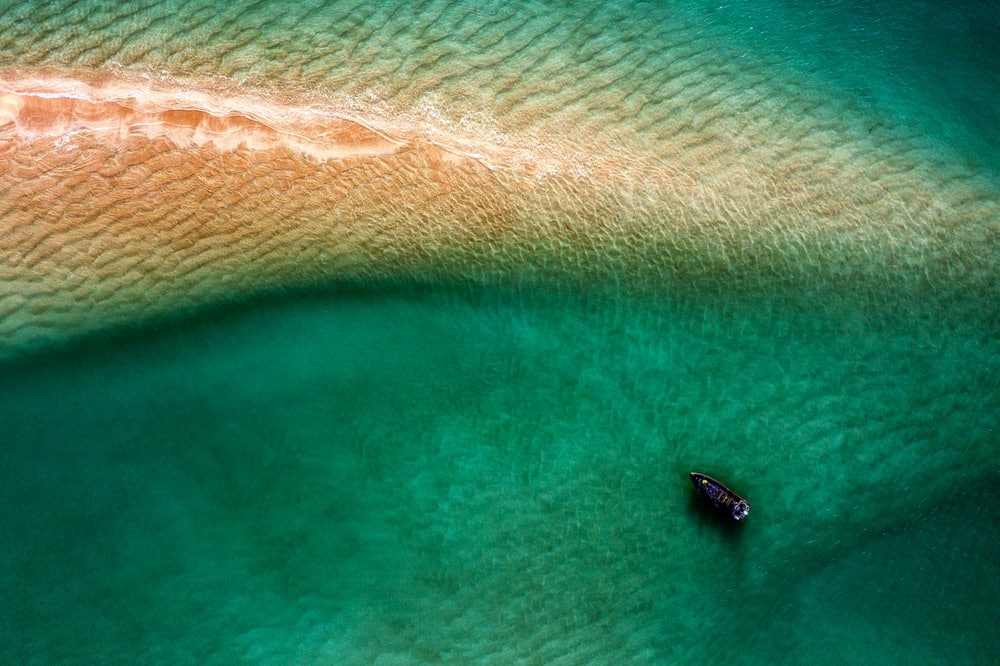
© Jason Masterman.
Visitors welcome
Coming in from the south, cardinal marks on prominent drying heads assist a skipper in piloting northwards up the Sound to the visitor buoyage. Many boats transit this area throughout all states of tide, including large, fast ferries arriving from the French mainland throughout the day. Constant vigilance is required as some of this traffic can behave erratically, particularly if the skipper has enjoyed an afternoon in one of the two fine restaurants overlooking the Sound! Not every shoal and head is marked directly by buoyage either, so the importance of the helm wearing a high-quality pair of polarised sunglasses can hardly be overstated as that may be their best chance of dodging a menacing rock or shoal lurking just under the surface. (Of course, if your vessel is blessed with the latest forward-looking sonar, the need to use polarised sunglasses might be lessened a little!)
The visitor moorings consist of a limited number of white fore and aft buoys, and unsurprisingly these are often exceptionally busy in high season, particularly at weekends. Rafting several boats to a mooring is therefore typical in Chausey, and having sufficient fenders aboard ready to deploy as necessary is essential in the skipper’s final preparations to moor. Some skill in close-quarter handling will be required at this juncture as the Sound is very narrow in places, and there are many drying areas on either side of the channel on a lower tide. The swift currents that rush down the Sound, coupled with the busy boat traffic in the area, mean that a skipper may not have as much room or as much time as they would like when finding and then picking up a mooring or coming alongside another boat to raft.
Tides and tethers
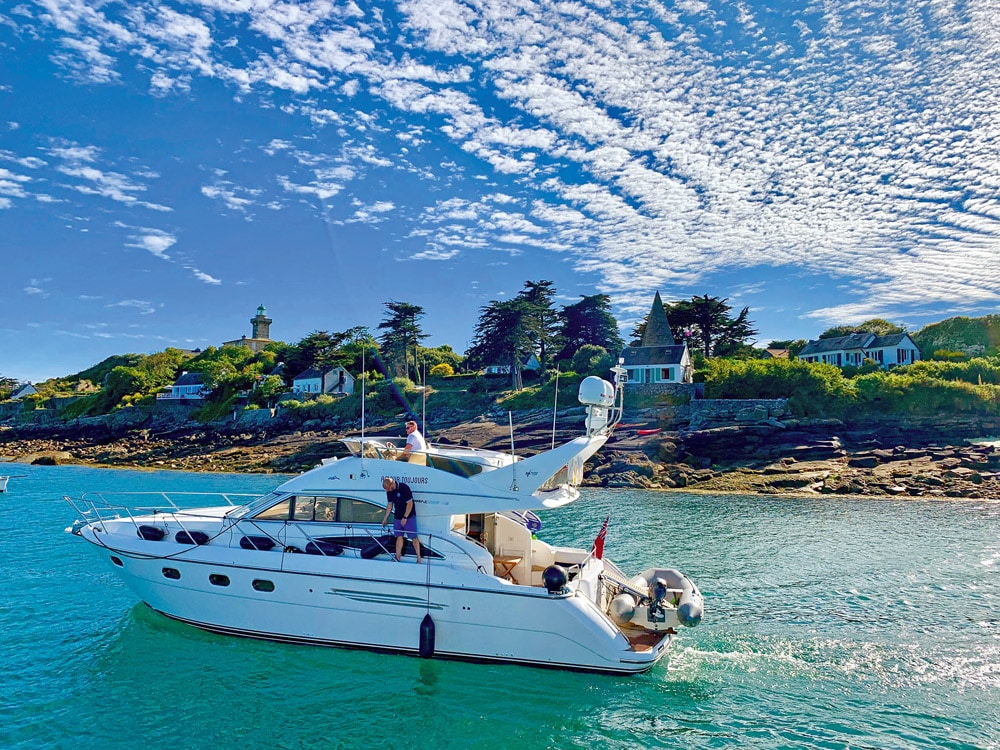
Chausey Sound © J. Mourant
When tendering to Grande-Île, usually to the prominent large stone slip, the tide will often be running strongly through the Sound and that usually isn’t the best time to work on your rowing skills. On a high enough tide, the ferries will likewise use this same slip, motoring their bulk against the rubberised pilings on the slip itself to hold station. A decent outboard on the tender is therefore essential kit as this is most certainly not an area to find yourself with inadequate propulsion and a ferry bearing down! There is also a large wooden pier structure (awash at high water), which is primarily used throughout each day by the ferries bringing day trippers over from Granville, Saint-Malo and Dinard. While this cannot be moored upon for any length of time, it can be used to drop off passengers after the main slip dries at around half tide, and it will have sufficient water for most power craft even at the bottom of the tide. A savvy skipper will drop their party at whichever slip most suits the tidal height before mooring and then tender in solo or with a single crew in order to lighten the load during the several hundred-metre trip in from the visitor buoys.
Grande-Île
Grande-Île itself is only 1.5km by 0.5km (just over 100 acres in total), so traversing the island doesn’t take long at all. However, its picturesque green expanse is criss-crossed by many different pathways to explore, and there’s always an out-of-the-way place to sit and enjoy a spectacular view. Also worth mentioning is the enormous expanse of sand, rock and pool revealed by the receding tide each day, increasing the land mass of Grand-Île manyfold. Someone who knows the area and its tides well can guide you on a hike of several miles through this lunar landscape around the low tide, and you’ll reach other islands that weren’t even visible at high water as you hunt out lobsters, whelks and prawns.
There are fewer than 50 houses on the island, a hotel and several places to buy food and drink.

Old traditional church on Chausey island. © Daboost Shutterstock
Some of the dwellings are staggeringly pretty fishermen’s cottages, seemingly all but unchanged since their construction centuries ago. Their charm is hard to overstate. Grande-Île’s chapel is perched on a hillock close to the main landing slip, and this has commanding views well worth a visit to appreciate. Dating to around 1840, the long years of sun, salt and storms are unmistakably ingrained in the chapel’s weather-beaten facade as it sits like a benign watchman guarding the Sound. [Paul – use pic of church here] Numerous self-catering and Airbnb accommodation options for Chausey have sprung up online, so overnighting here has never been easier.
Grande-Île rises to a plateau on its southern end, and from the highest points there are beautiful views across the archipelago to mainland France. It is quite common to find lovely wooden sailing boats such as the Charles-Marie visiting Chausey from Granville and Saint-Malo, and the sight of these big traditional vessels under full sail immediately transports one back in time. On a clear day, Jersey and Les Minquiers are visible to the north and appear surprisingly close, while off to the far south is the distant and unmistakable silhouette of the abbey at Mont Saint-Michel, an ethereal sight that people on Chausey have looked out upon and enjoyed for more than a thousand years.
Far from the madding crowd
If a skipper prefers to stay on their boat and enjoy an adventure away from Grande-Île and its day trippers, Chausey offers many possibilities to those who prefer to explore far from the madding crowd. There are tiny islets in the archipelago’s interior consisting of nothing more than a sandy beach, a green-capped mount and a single impossibly picturesque dwelling. While some areas are signposted to advise that landing is prohibited, there are fantastic opportunities to drop a hook in a sandy bay and picnic, snorkel or paddleboard in absolute peace and quiet. As you approach the archipelago, you will see many boats tucked away deep in its interior at some favoured quiet spot; many skippers I know enjoy visiting here several times each summer and haven’t set foot on the main island itself in years!
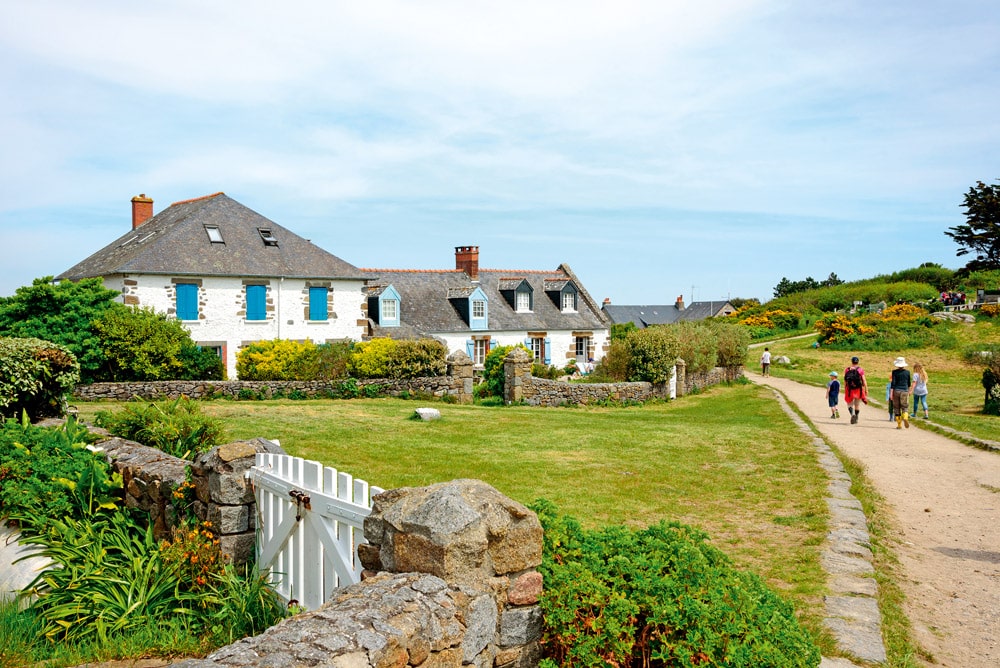
The road of the main island of Iles de Chausey. © Mikael Broms/Shutterstock.
There are numerous small sandy coves around Chausey, which allow for straightforward access from deeper water and simple anchoring. Port Marie is one such bay, found on Grande-Île’s south side, just before the entrance to the Sound. This little bay can often be a much simpler proposition than the visitor moorings if you’re happy to stay on the hook. Most of Chausey’s little bays offer sheltered lagoon-like conditions fringed with forests of seaweed undulating below the surface, which, when explored, will be found to be teeming with rockfish, prawns, mullet and bass. If venturing further into the reef’s interior, it’s critical to keep a regular eye on the depth sounder here and compare its readings with a tidal curve (either from an app or the old-school paper variety found in any almanac or chart set) to understand how much water is beneath your keel relative to the expected depth throughout the duration of your anticipated stay. Remember, the tide here could be rising or falling more than 2 metres each hour, so a skipper must exercise vigilance with the routes and anchorages selected.
Chenal Beauchamp
When visiting Chausey, I always make time to head to the east and explore the Chenal Beauchamp, a serpentine channel that cuts through the entire archipelago from its northern to southern limits. This can be transited at any height of tide, and passing along the channel on an extremely low tide is incredibly rewarding as an enormous profusion of sandbanks, mussel beds, rocks and gullies are revealed as the tide retreats. As networks of beaches and sandbars dry, a skipper will be tempted to drop a hook or ground the boat and enjoy a secluded spot all to themselves for the duration of the tide’s lowest stages. The benefits of outboard engines are manifest in such circumstances as it becomes as easy as choosing a sandy spot on either side of the channel with an adequate degree of shelving, then trimming up and gently beaching the front half of the boat while the stern remains quite happily in deep water. This method allows for a very flexible time frame as you can come and go as you like. It’s certainly a more relaxed option than deputising an unfortunate crewmember to be your windlass for the day!
The wild side
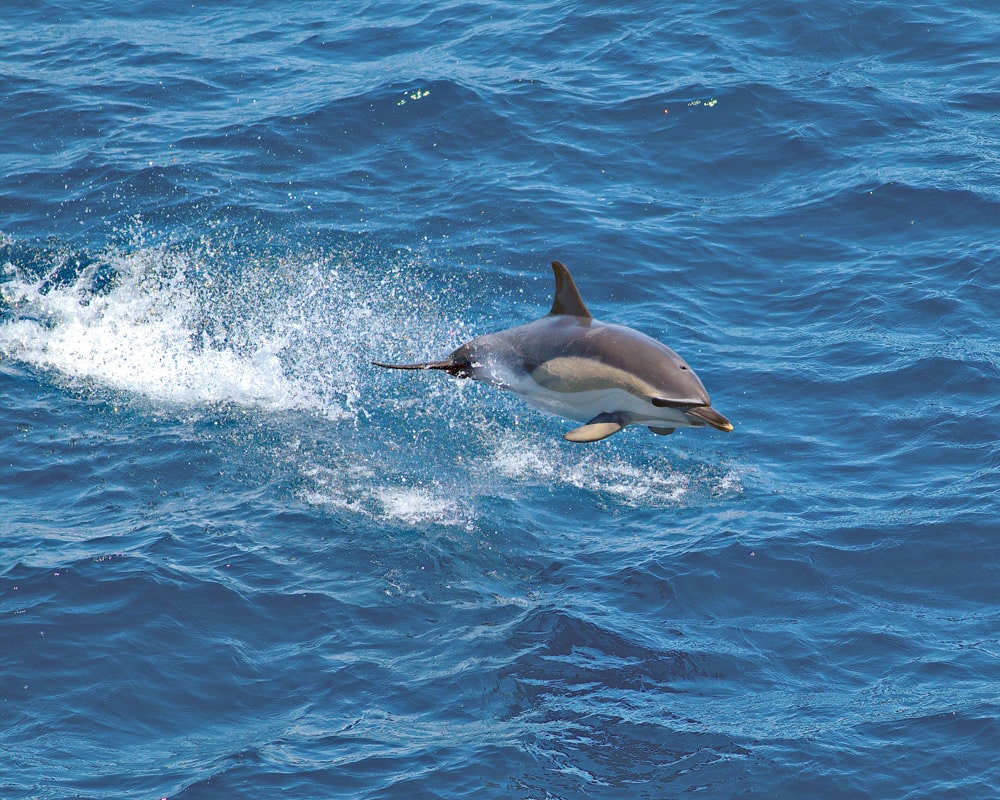
Dolphin are regular visitors to the islets. © Dr John A Horsfall – iStockphoto.com
On the journey to or from Chausey, there’s always an excellent chance that a pod of dolphins might join you for part of the way. If you’re fortunate, they may very well take turns bow surfing or leaping about near your boat, putting on an extraordinary display of dolphin aerobatics. While that drama plays out at sea level, huge gannets methodically patrol the skies overhead, searching for prey before plunging into impossibly dramatic dives that explode down into the deep. In recent years, large numbers of bluefin tuna have moved into local waters and are usually to be found in the deep waters between the islands. An enormous bluefin weighing several hundred pounds suddenly erupting out of the water on the hunt is now the holy grail of marine wildlife spotting. This is as jaw-dropping as it is unexpected, usually happening without any warning at all. What better way could there be to cap off a visit to such an extraordinary place than absorbing sights such as these?
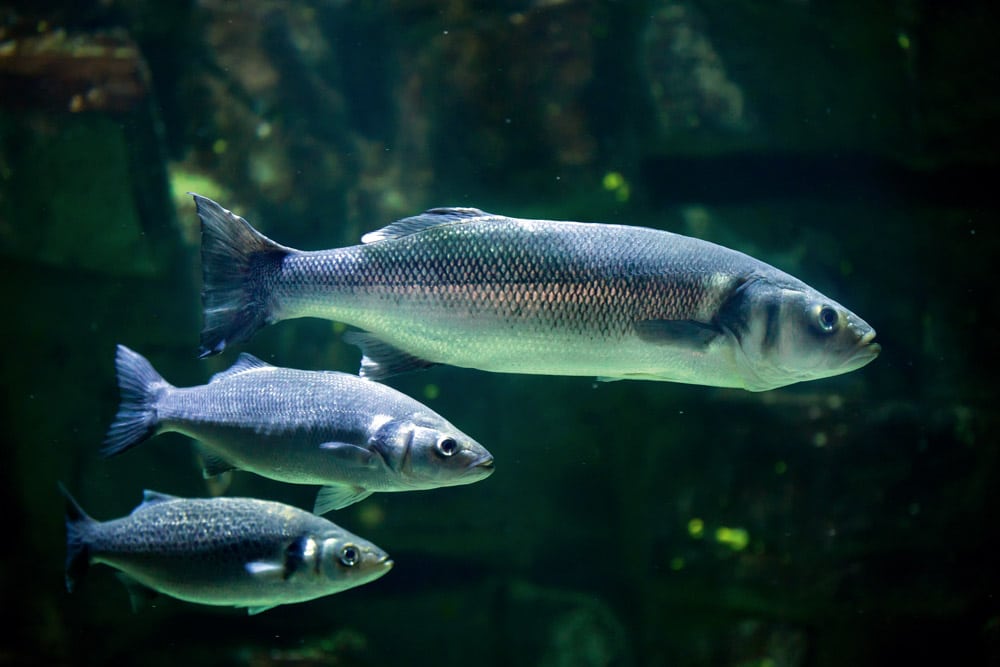
European seabass © Wrangel – iStockphoto.com.
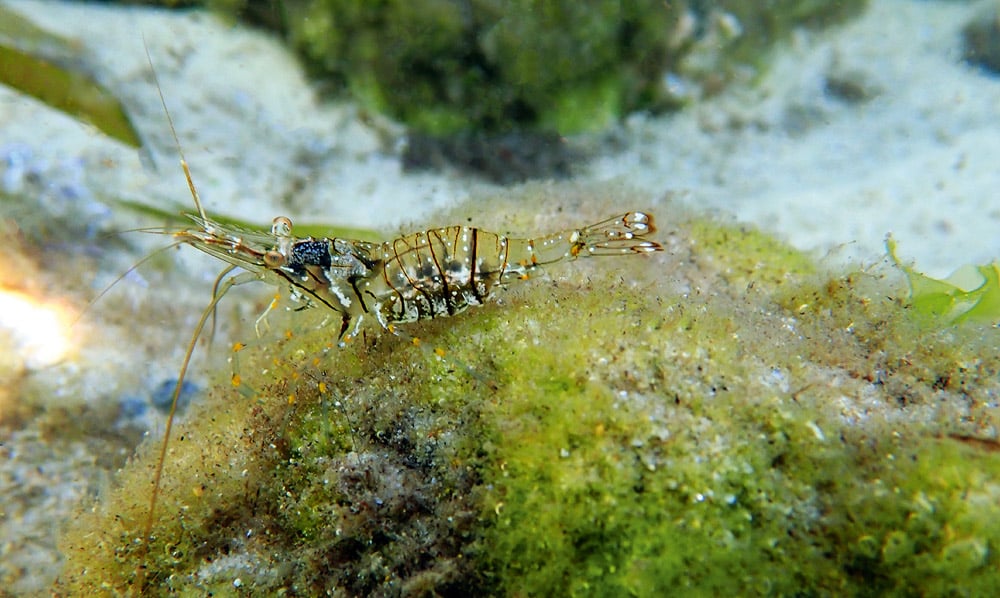
Rock pool shrimp. © vojce – iStockphoto.com
Places to stay and eat
- The island has only one small hotel, the Hotel du Fort et des Iles. Dating back to 1928, this family-owned hotel has stunning views over the Sound from its perch on the island’s highest point and has a terrific restaurant that offers both indoor and al fresco dining on its terraced lawn.
- Le Sound is the island’s other restaurant and offers superb views and excellent fare in a slightly more casual setting than the hotel.
- Numerous self-catering and Airbnb options can be found online, with Gîtes de La Ferme de Chausey being a particular standout.
History of Chausey
In common with the other Channel Islands, Chausey has at different times in history belonged to, and been fought over by, Great Britain and France and was occupied by German forces during WWII.
The French industrialist and titan of automotive manufacturing Louis Renault repurposed the Napoleonic fort on Chausey during the 1920s to create a grand residence and business retreat, and this most sizeable of the island’s dwellings is today known as Chateau Renault.
The island has only 30 or so permanent inhabitants, although this number increases hugely during the summer when the seasonal workers and tourists arrive. From the mid-19th century until just after the war, approximately 500 quarrymen lived in Chausey mining granite, which was much sought after around France and was used, among other things, for pavements and grand residences in Paris.
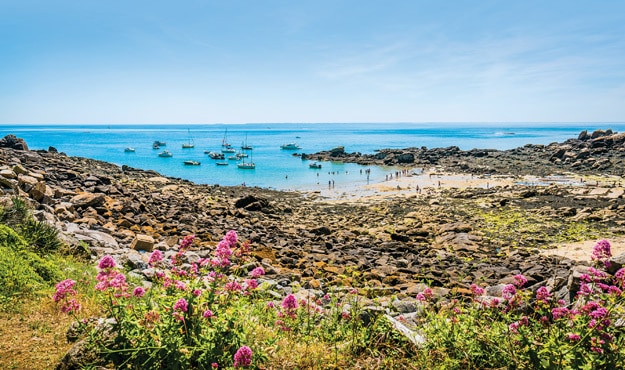
© J. Mourant
The author
- Joe Mourant is a commercial skipper and RYA Yachtmaster Instructor for Power.
- He is based in Jersey and provides tuition, charters and private skippering at www.lemouriermarine.co.uk
Additional local pilotage info
Highly useful local information used by many boat owners and operators in the region is produced and edited by Colin Le Conte: https://www.digimap.gg/marine/marinas/chausey/

